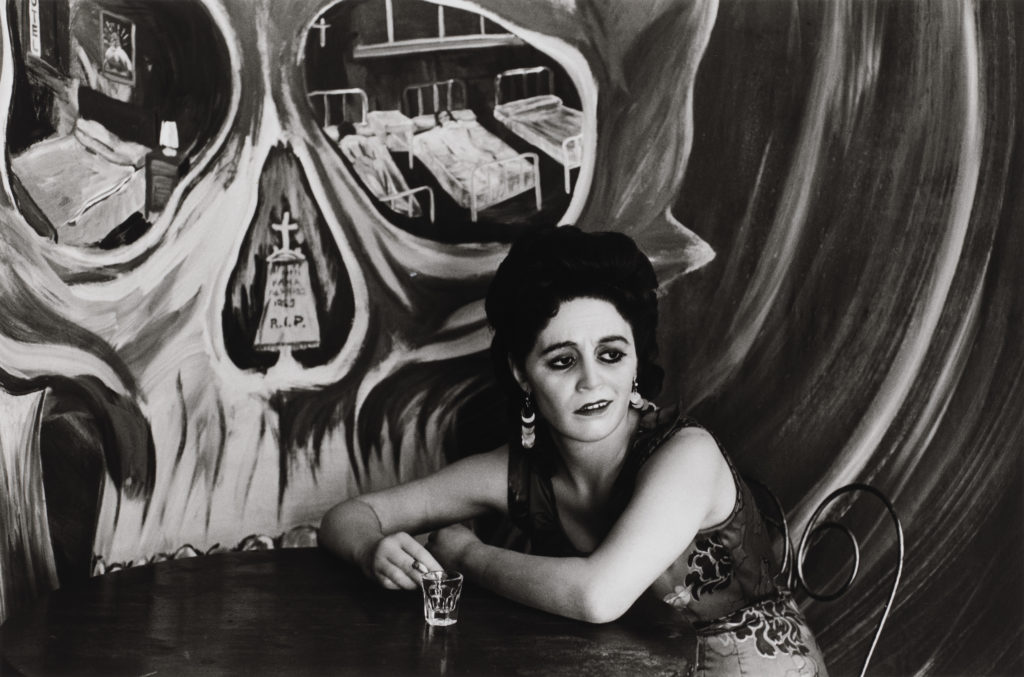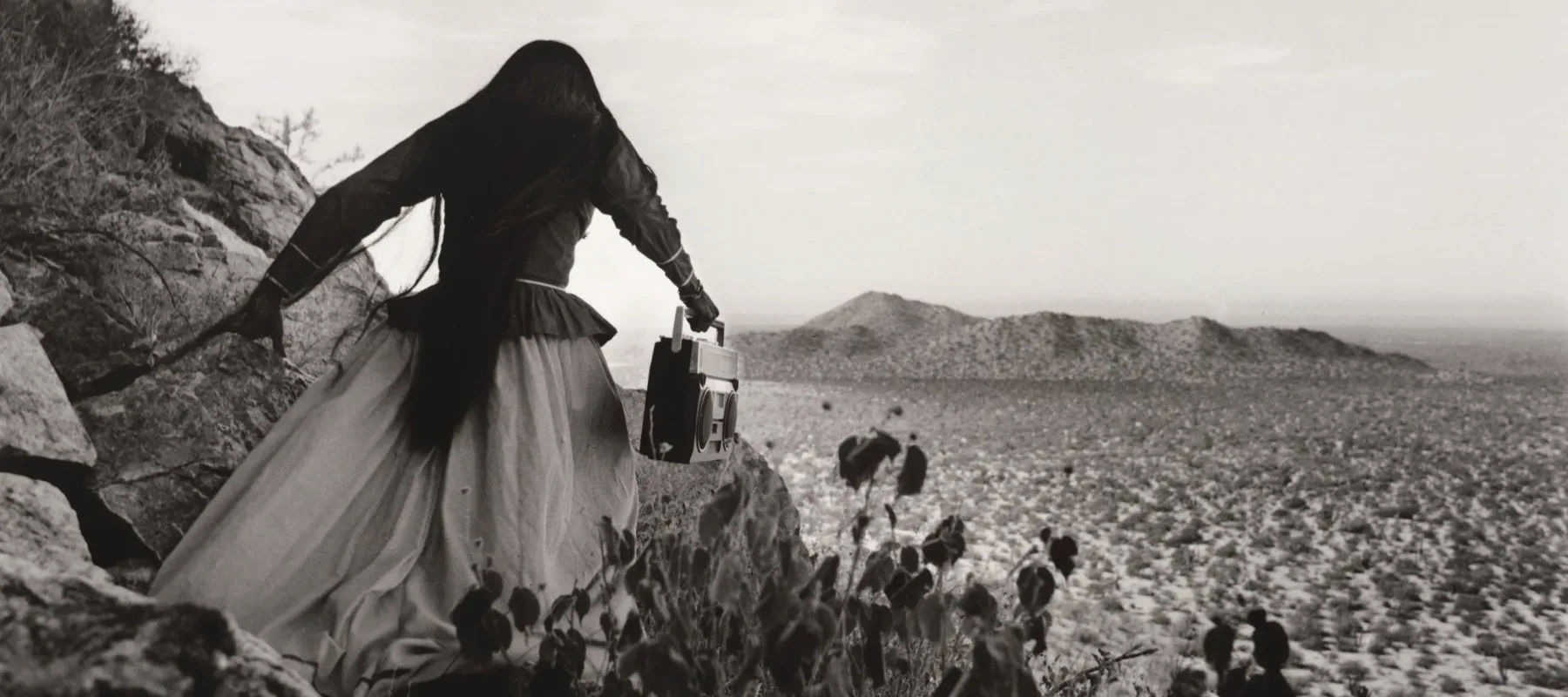One of the most influential contemporary photographers of Latin America, Graciela Iturbide has produced majestic and powerful images of her native Mexico for the past 50 years. Graciela Iturbide’s Mexico is the artist’s most extensive U.S. exhibition in more than two decades, comprising 140 black-and-white prints that reveal the artist’s own journey to understand her homeland and the world.
The photographs of Graciela Iturbide (b. 1942) feature social, religious, and natural symbols that define Mexican cultural and national identities in all of their complexity. By juxtaposing the country’s Indigenous and European influences, Iturbide’s photographs capture the hybridity of the Mexican people. As Iturbide seeks to understand her country and its distinct communities, she captures symbols that link past to present and guide the artist—and viewer—in navigating Mexico’s layered history.

A Prostitute, a Cantina, a Mural
In Mexico City (1969), Iturbide evokes the harshness of life in the metropolis. This photograph portrays a tired-looking sex worker seated in what appears to be a cantina; a mural is painted on the wall behind her. The scene depicts a large skull in which the eye and nose cavities frame images of a hotel room, hospital beds, and a cemetery. These scenes allude to Mexico’s history of muralism and the country’s fascination with death. And, in fact, the prostitute is not a real woman, but instead a sculptural figure in the city’s wax museum. This early experiment highlights Iturbide’s interest in the photographic limits of fiction and reality.
Fiestas for Every Occasion
Mexico’s spirited, colorful, ritualistic celebrations fascinate Iturbide. Fiestas evoke Mexico’s cultural hybrid of Indigenous and Spanish heritage. In Janus (1980), a young man wears two masks. Iturbide’s title and the man’s costume evoke Janus, the two-faced Roman god who sees both the past and the future. He represents duality, the passing of time, and transitions. The young man’s masks and party clothes embrace multiple identities at once. He is a reflection of Mexican cultural hybridity as his multiple identities imply Indigenous heritage, Spanish imperialism, and contemporary globalization.
The (Absent) Virgin of Guadalupe
Iturbide frequently photographs religious symbols as another marker of the complexities of Mexican identity. The prevalence of Catholicism in Mexico is a direct result of European colonization. Yet, many converted societies incorporated elements of their traditional indigenous celebrations and practices into Christian festivities. Vírgen de Guadalupe (Virgin of Guadalupe) (2007), named for Mexico’s most important religious figure, is a symbolically rich photograph, highlighting both religious and natural symbols. The photo shows a painted backdrop of an empty mandorla prepared for a parade in Chalma, a famous site of both indigenous and Christian pilgrimage. The backdrop is designed to frame a statue or a woman dressed as the Virgin of Guadalupe. The Virgin’s absence emphasizes the botanical and yonic shape of the mandorla; its rays echo the spiny leaves of the native agave plants that bookend the backdrop. The mandorla’s painted sky and landscape mimic the real natural world, blurring the lines between what is real and what is fake.
*Unless otherwise noted, information is adapted from Graciela Iturbide’s Mexico: Photographs, by Kristen Gresh, with an essay by Guillermo Sheridan.
